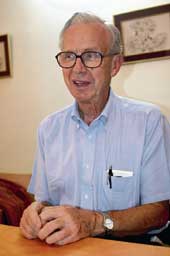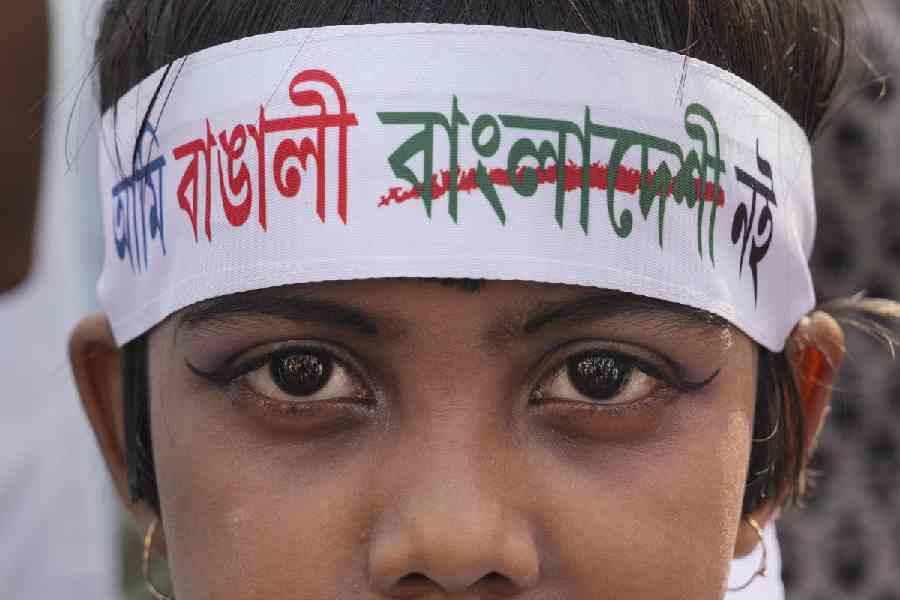 |
| Ralph W. Nicholas. Picture by Sanat Kumar Sinha |
As he is being driven over the Park Street flyover on Sunday afternoon, Ralph W. Nicholas points to the top floor of the Indian Museum, and says as a student in the early 1960s he would spend hours there with Nirmal Kumar Bose, who headed the Anthropological Survey of India.
Nicholas is William Rainey Harper professor emeritus of anthropology and social sciences at the University of Chicago and former president of International House of Chicago.
Then one day Bose said he was ready for field work and Nicholas spent months in the villages of Midnapore and Murshidabad studying the fascinating folk culture of this riverine region, where till the early 19th century, when the Faraizi or Fara?aidi movement in Eastern Bengal had dictated the deletion of all Hindu influence, there were many affinities between the cultures of Hindus and Muslims.
But how did Nicholas, who was raised in Detroit and lived in farms without electricity, become interested in Sitala, Olabibi and other mother goddesses of the villages of Bengal? He will receive Rabindra Puraskar on Monday for his book Fruits of Worship, Practical Religion in Bengal dealing with such issues.
Nicholas says he could have easily opted for the more lucrative profession of a doctor but a childhood meeting with Indians, who were still a rarity, was the deciding factor.
?They were so different,? says Nicholas who was born in 1934. So he went to the University of Chicago and in 1958 studied Bengali under Edward C. Dimock, fresh from Calcutta after working on the Chaitanya movement.
For his field study Nicholas chose villages which had a complete array of castes. It was during Durga puja that every caste could be seen in its ?proper hierarchical relationship?. Such Durga pujas, he admits, are becoming ?scarcer and scarcer?. ?Now it is votes that count more than caste rank,? he stresses.
He admits that villagers have a ?materialistic agenda? today. Earlier when a villager made money he would want to build a Harimandir first. Now he will go in for a motorcycle or a TV.
In Bengal he kept stumbling upon the unexpected as well as rituals that were given up as lost. In 1982, for example, he discovered that the pithphonra charak, where a Shiva devotee, whose back had been pierced, whirled several feet above the ground, was still performed.
Nicholas soon discovered that the mind gets attuned to what the villagers were interested in talking about rather than imposing his own agenda on them. A large section of Fruits of Worship deals with the worship of Sitala and Olabibi, written after his retirement from the University of Chicago in 2000. He wondered why the villagers had chosen an unattractive deity such as Sitala as the mother goddess and not a benign protectress.
Nicholas also investigated the link between a malaria epidemic in the 19th Century and the publication of a spate of Sitala Mangals, although Jwarasur, who was the dread goddess?s handyman, was held responsible for the mysterious fever.
Although Nicholas has not looked into the origins of Olabibi deep enough, he feels that the goddess of cholera epidemic, whose priests were always Muslims, emerged in early 19th century which witnessed the first outbreaks of the scourge in the Muslim neighbourhoods of Calcutta. ?Perhaps the Hajis were bringing it back from Arabia. So they felt the need to propitiate the goddess. This was before the spread of the Wahabi influence.? Nicholas is working on a book on gajan to be published soon.











